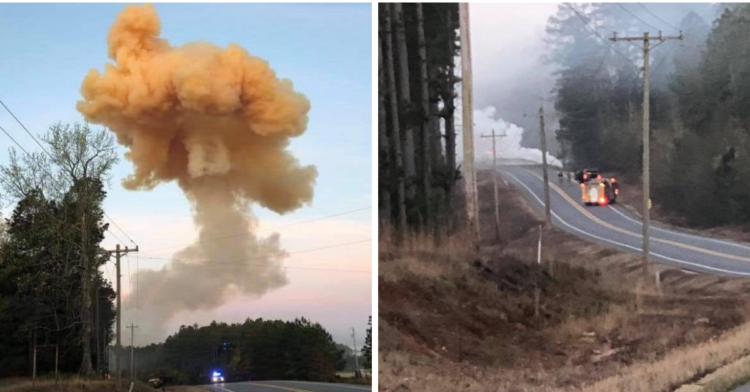When the only exposure we have to the trucking life is sharing the highway with an 18-wheeler, it’s easy to forget how lonely, thankless, and often dangerous the job can be.
This is often because the fatigue that comes with meeting tight travel deadlines can make for risky driving conditions, but sometimes the danger can come from the cargo itself.
This reality exists at the heart of a recent tragedy in Arkansas.
On Wednesday, a truck that police said was carrying ammonium nitrate pulled over on U.S. Highway 278.

As the Magnolia Banner-News reported , the truck’s driver, 63-year-old Randall McDougall, had noticed a fire starting on the rear trailer wheel.
Another trucker apparently stopped to help him and called in the blaze to the Camden Fire Department.

AP News reported that witnesses saw McDougall attempt to extinguish the flames, but according to Magnolia Banner-News , he was told that the fire would need to burn out on its own.
This was because they couldn’t possibly get enough water together to douse a fire fueled by ammonium nitrate.

However, while authorities were moving away from the truck to evacuate the area, McDougall was moving towards it.
It’s unclear exactly what he had in mind and we’ll sadly never know.
As he was headed towards the truck, its cargo exploded.

As the Magnolia Banner-News reported , this sent shockwaves as far as 40 miles away and caused a yellowish mushroom cloud to fill the air.
As one resident who lived less than two miles away said, “I thought it was an atomic bomb – I really did. When I saw that yellow cloud coming up, I thought we were under attack. It threw everything off of my table. It blew the underpinning off of my house. It was intense.”
Closer to the site, it was clear that McDougall had died, but there was hardly any sign that the truck had been there in the first place.

As one member of the Stephens Fire Department told the Magnolia Banner-News , “There’s just nothing left — only some axle parts.”
Unfortunately, this isn’t the first time that Americans have had a tragic view of the destructive power of ammonium nitrate.

After all, this was the main explosive that terrorist Timothy McVeigh used in the bombing of an Oklahoma City federal building in 1995.
For this reason, authorities are putting the sad results in perspective and noting how much worse this could have gone.

As one responder said, “It’s just lucky the blast was settled down in a dip in the road and it was in such a rural area.”
As AP News reported , the blast left a 15-foot crater in the road.
Even in this sparsely populated area, the explosion didn’t just affect the area in that crater.

Most homes in the area were left without power, water, and even hardline phones as a result of the blast, and it was unclear when they would get it back because federal haz-mat investigators had to check the scene before any of those could be restored.
h/t: Magnolia Banner-News

















































